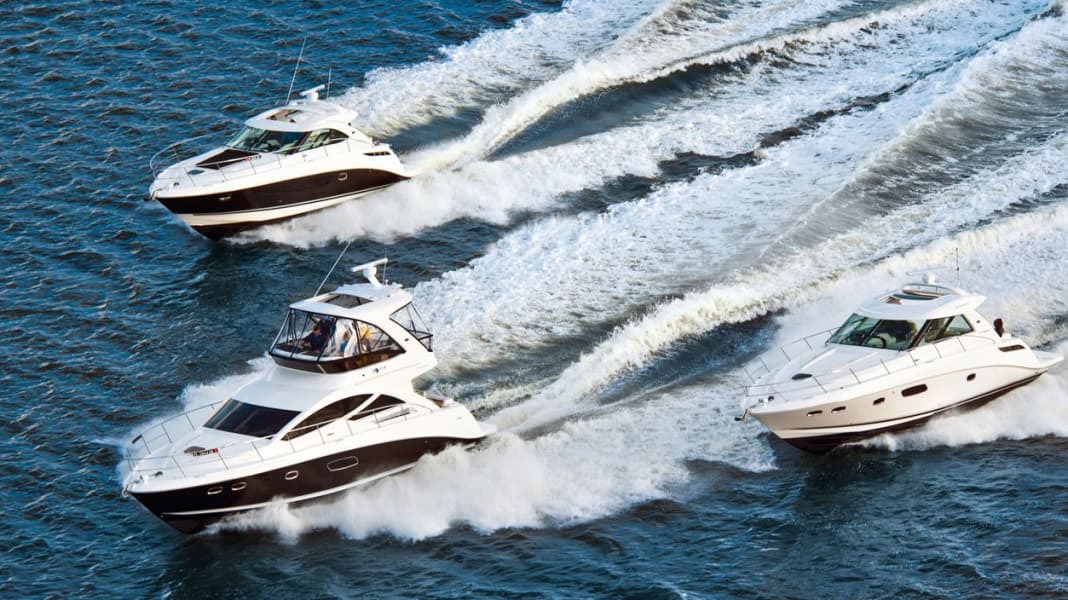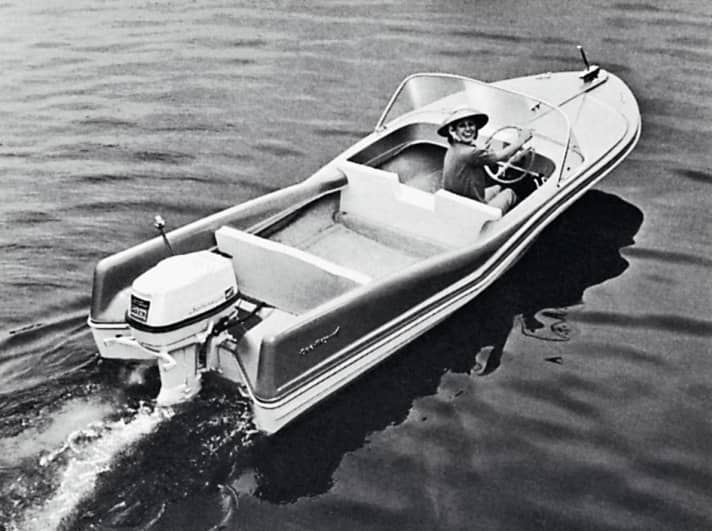
At the end of the 1950s, the mood was good. The Great Depression of the 1930s and the misery left behind by the Second World War seemed to have been overcome.
Many people could now afford something. This led to a boom in water sports. Boat sales in the USA had already doubled in that decade.
New shipyards sprang up like mushrooms, only to disappear from the still unstable market a short time later. Cornelius Nathaniel Ray III, then aged 34, was also one of the boat enthusiasts who believed in the boom in water sports.
So in October 1959, the scion of an entrepreneurial family bought the remains of Carr-Craft, a faltering company with several moulds for fibreglass boats, golf carts and coffins in Detroit.
He founded Sea Ray on this basis. With no experience in boatbuilding, production began with three employees. These included his friend and business partner Arch Me- haffey and Carr-Craft fibreglass specialist Jerry Michalak. Just a few months later, the boatyard moved to Ray's home town of Oxford, Michigan.
The young entrepreneur focussed on quality right from the start and immediately began developing his own line. The design legend Harley Earl is engaged for this purpose.
Earl had founded the design department of General Motors in 1927 and was responsible for the design of the cars until he retired in 1958.
After a labour-intensive winter, the first sports boats for outboards between 13 and 17 feet are presented in April 1960. These included the Sea Ray SR600 with stern fins, the style of the road cruisers of the era.

In 1962, the first boats with inboard engines were launched, and production capacity had to be doubled just two years later. In 1964, the SRX 17 and the SRV 230 are the first boats with V-hulls and steep chine, which improves the sailing characteristics in waves.
In 1971, Sea Ray relocates its headquarters to Phoenix, Arizona. A year later, a factory for larger yachts follows in Merrit Island, Florida. A decade of expansion and model diversity begins.
The SRV 240 is the first Sundancer model to be launched on the market. The line still exists today. After steady growth, a plant in Knoxville, Tennessee is added in 1978. At the end of the decade, Ray steps down as president and hands over to his partner Mehaffey.
By the mid-1980s, further plants had been built near Knoxville and in Palm Coast, Florida. In 1984, C. N. Ray takes the helm again. During the reorganisation, the headquarters moved to Knoxville.
In 1986, Sea Ray is the second largest recreational boatyard in the USA. A plant in Tennessee and the first overseas production facility in Ireland are added. As Mercury's largest customer is now also being eyed by competitor OMC, the parent company Brunswick quickly makes a move. 350 million dollars change hands.
Sea Ray is now owned by Brunswick, and Mercury retains its customer. The rapid expansion continues with a new plant in Fort Mill, South Carolina.
Many new models such as the Pachanga II or the Laguna series were added in 1987.
Problematic years followed with a huge drop in sales and plant closures in Tennessee, South Carolina and Oxford, Michigan. But success returns. Sea Ray takes over Baja in 1995, followed a year later by Boston Whaler.
The new millennium brings reorganisation. Following the merger of the Sea Ray Boat Group and the Brunswick Boat Group in Knoxville, the Brunswick Group becomes the world's largest manufacturer of leisure boats and propulsion systems.
In 2009, after numerous new launches such as the Sundancer models 235, 265, 285, 475 and 540, the shipyard is hit hard by the financial and economic crisis. Sea Ray focusses on large yachts and launches the luxurious L-Class in 2014.
Sales are sluggish. Factory closures follow. From 2016, the Sundancer 350, the SLX-W 230 and the SLX 400 are launched again as smaller units. In 2018, the news that the brand is up for sale comes as a surprise. There are interested parties, but no agreement is reached.
Six months later, it is announced that Sea Ray will remain with Brunswick. Yachts over 40 feet disappear, followed by the closure of the Sykes Creek and Palm Coast plants in Florida with 825 redundancies.
Parts of the development are taken over by Boston Whaler, where new Sea Ray models are also being built today. Thanks to the production of smaller boats in Poland, the shipyard is not affected by the EU's punitive tariffs with these units.

